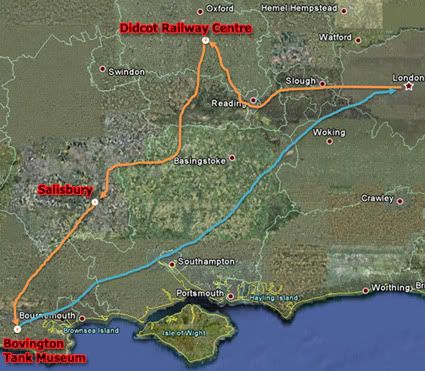
Didcot Railway Centre
June 26-27 is probably the best time of the year for this museum, because that's when they have three locomotives in operation at the same time:
 Pannier tank 0-6-0 locomotive. The type was first introduced in 1898 by Great Western Railway, but the specific one, '3738', is from 1937. It was allocated to Old Oak Common depot in London and after a working life of around half a million miles it was sent for scrapping in 1965. However, it was bought by two members of the Great Western Society and it was restored in 1976.
Pannier tank 0-6-0 locomotive. The type was first introduced in 1898 by Great Western Railway, but the specific one, '3738', is from 1937. It was allocated to Old Oak Common depot in London and after a working life of around half a million miles it was sent for scrapping in 1965. However, it was bought by two members of the Great Western Society and it was restored in 1976.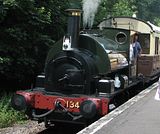 0-4-0 ST, named 'Trojan'. A tiny 22-ton locomotive that was built in 1897 in Bristol.
0-4-0 ST, named 'Trojan'. A tiny 22-ton locomotive that was built in 1897 in Bristol.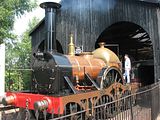 Broad gauge 2-2-2 'Firefly'.This is a replica built in 2005, but the original Firefly class was introduced in 1840.
Broad gauge 2-2-2 'Firefly'.This is a replica built in 2005, but the original Firefly class was introduced in 1840.A video of these three locomotives in action from yesterday:
More photos:
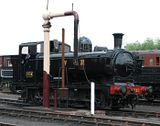

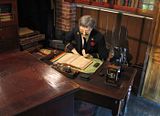

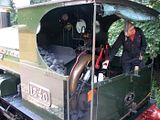
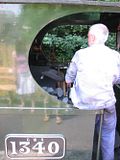


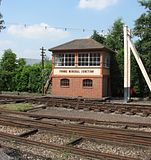
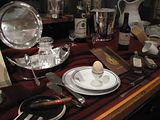
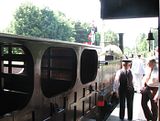


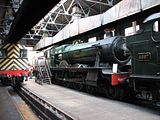


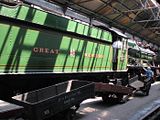





Salisbury
Before moving on to Bovington we stayed at the beautiful medieval city of Salisbury.
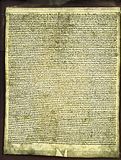 The Cathedral's collection includes the best preserved of the four surviving original Magna Cartas from 1215. Despite its excellent condition, I still found it impossible to read. It was so heavily abbreviated for space saving that I didn't even realise it was in Latin.
The Cathedral's collection includes the best preserved of the four surviving original Magna Cartas from 1215. Despite its excellent condition, I still found it impossible to read. It was so heavily abbreviated for space saving that I didn't even realise it was in Latin.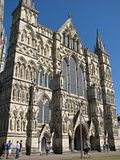
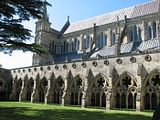
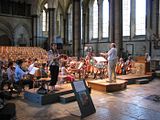
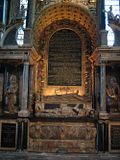
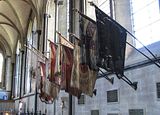
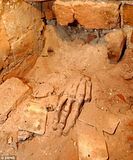
The last photo shows a mummified hand that you can see in the "Haunch of Venison" restaurant. It is thought that there are two wandering spirits in the restaurant; the Grey Lady, who is searching for her child, and the Demented Whist Player who lost his hand, severed in a card game due to cheating. Haunted or not, the food was excellent.
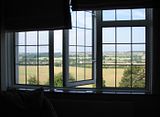 We spent the night at Sarum Heights, a lovely Bed & Breakfast with spectacular views. It was right next to the Old Sarum.
We spent the night at Sarum Heights, a lovely Bed & Breakfast with spectacular views. It was right next to the Old Sarum.The Old Sarum
This is the site of the earliest settlement of Salisbury, containing evidence of human habitation from around 3000 BC. Old Sarum sits on a hill about two miles north of Salisbury.
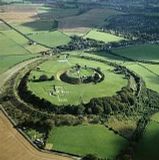 The Romans held the site as a fort, strategically placed near the convergence of five roads, and marked it on roadmaps by the name of SORVIODVNVM. Later, it was considered one of the important towns of both the West Kingdom of the Saxons and of the Normans. It was not unusual for national councils to be held there. A motte and bailey castle was built shortly after the Norman conquest, and the town was renamed to Sarisburia. In 1086, William the Conqueror convened the prelates, nobles, sheriffs and knights of his dominions at Old Sarum to pay him homage.
The Romans held the site as a fort, strategically placed near the convergence of five roads, and marked it on roadmaps by the name of SORVIODVNVM. Later, it was considered one of the important towns of both the West Kingdom of the Saxons and of the Normans. It was not unusual for national councils to be held there. A motte and bailey castle was built shortly after the Norman conquest, and the town was renamed to Sarisburia. In 1086, William the Conqueror convened the prelates, nobles, sheriffs and knights of his dominions at Old Sarum to pay him homage. 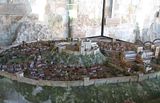 A little later, a cathedral and bishop's palace were built on the hill. The first cathedral was burned down when it was struck by lightning only five days after it was concecrated. A new cathedral was completed in 1190. French medieval poet Peter of Blois described it as "barren, dry, and solitary, exposed to the rage of the wind; and the church (stands) as a captive on the hill where it was built, like the ark of God shut up in the profane house of Baal."
A little later, a cathedral and bishop's palace were built on the hill. The first cathedral was burned down when it was struck by lightning only five days after it was concecrated. A new cathedral was completed in 1190. French medieval poet Peter of Blois described it as "barren, dry, and solitary, exposed to the rage of the wind; and the church (stands) as a captive on the hill where it was built, like the ark of God shut up in the profane house of Baal."Relations between the clerics of the cathedral and the castle guard were punctuated with outbreaks of petulance and occasional violence. The churchmen became so exasperated that in 1219 they decided to build a new cathedral to the south. A settlement grew up around the new cathedral, and it is this settlement that is the modern city of Salisbury.
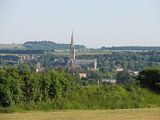 As Salisbury grew larger, Old Sarum's castle fell into disuse. By the 17th century, Old Sarum had been abandoned and had no resident voters at all (most of the population had moved to nearby Salisbury), yet it retained its two members in the House of Commons. This made it the most notorious of the "rotten boroughs". In 1831, Old Sarum had eleven voters, all landowners who lived elsewhere. The Reform Act 1832 completely disfranchised Old Sarum. Interestingly, a 18th century Prime Minister of Great Britain, William Pitt the Elder, had first entered the Parliament as member for Old Sarum, and this example was used by the Tories who were defending the rotten boroughs. The logic was that rotten boroughs provided stability and were a means for promising young politicians to enter parliament.
As Salisbury grew larger, Old Sarum's castle fell into disuse. By the 17th century, Old Sarum had been abandoned and had no resident voters at all (most of the population had moved to nearby Salisbury), yet it retained its two members in the House of Commons. This made it the most notorious of the "rotten boroughs". In 1831, Old Sarum had eleven voters, all landowners who lived elsewhere. The Reform Act 1832 completely disfranchised Old Sarum. Interestingly, a 18th century Prime Minister of Great Britain, William Pitt the Elder, had first entered the Parliament as member for Old Sarum, and this example was used by the Tories who were defending the rotten boroughs. The logic was that rotten boroughs provided stability and were a means for promising young politicians to enter parliament.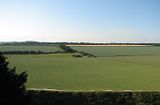 Today you can see the remains of the cathedral and the castle, as well as a replica bridge. The hill is ideal for an evening walk. Although the word is overused, I can't find a better one than "enchanting". Not many tourists and it offers a spectacular view of the region.
Today you can see the remains of the cathedral and the castle, as well as a replica bridge. The hill is ideal for an evening walk. Although the word is overused, I can't find a better one than "enchanting". Not many tourists and it offers a spectacular view of the region.Some photos:
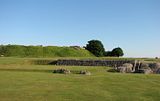


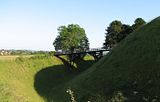

Next, Bovington through the lovely countrysides of Wiltshire and Dorset.
Bovington Tank Museum
You know that this will be a special day out when on your way to the museum you are warned about tanks crossing the road.
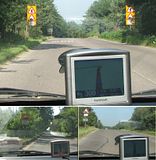
Throughout the day there are a number of events taking place, from parachuting to rifle shooting, but the centrepiece of TankFest is the demonstration of rare and historic vehicles in the Kuwait Arena. The arena was given this name as a recognition of a £1.5m donation from the Kuwaiti government, which in turn was in recognition of the role played by the Royal Armoured Corps in liberating the country in the 1991 Gulf War.
Some of the World War II vehicles of the show (Valentine, Panzer III, Kettenkrad, Stuart, Su-100, T-34/85):
A Marmon-Herrington MkIV given to the Greek government after World War II:
More photos of World War II vehicles:

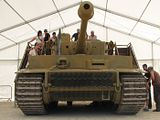





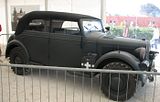
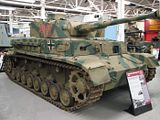
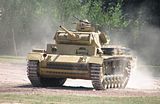
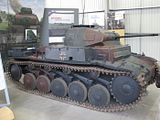









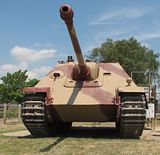
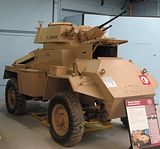
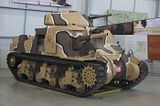

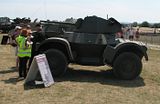

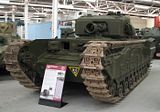

A number of post-war vehicles were also displayed (Centurion, Scorpion, Leopard, Patton, Cougar, Trojan, IVECO LMV, Scimitar, Bulldog, Viking BvS10, Warrior, Chieftain, Challenger I):
And the Challenger II:
No comments:
Post a Comment